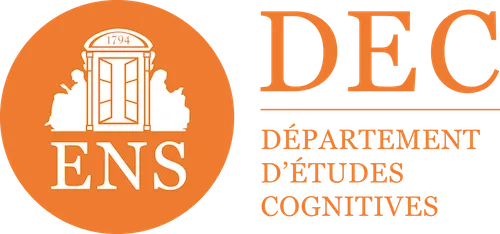

Effective strategies to promote training in the company
Even the best courses can go unnoticed if they are not properly promoted. Imagine that you have implemented a great online training program, but your employees are not aware of it or do not want to connect to it. It's like having a treasure hidden in the back of a cellar without leaving a treasure map!
For managers and HR managers, the key to success lies not only in the quality of training, but also in how it is presented to employees. Informing employees in an engaging way and motivating them to participate actively is crucial. Otherwise, even the most engaging modules on your LMS could remain well-kept secrets.
In this article, we therefore offer you effective and concrete strategies to boost the visibility and attractiveness of your internal training offers, and thus transform training in your company into an experience sought after and valued by all your employees.
Develop an effective internal communication strategy
Well-orchestrated internal communication is essential to promote training systems and maximize their impact. Here are some concrete strategies for doing so:
1. Use of internal communication channels
To inform employees about available training courses, it is crucial to use a variety of internal communication channels. For example, sending regular emails with information about new courses or upcoming sessions can be very effective. Also consider using the company's intranet, posters in common areas, or even notifications on your LMS platform.
A simple but effective example could be the use of testimonies or mini-interviews of employees who have received training. For example, a short video where an employee explains how specific training has allowed them to improve their skills or advance in their career can be very motivating for others. This type of content can be shared on the Intranet or during team meetings.
2. Commitment of managers as training ambassadors
Managers play a key role in promoting training systems. They are on the front line in encouraging their teams to actively participate in the training courses offered. Managers can incorporate discussions about training opportunities into performance reviews and regular team meetings.
It is also useful to train managers so they understand how training can contribute to team and business goals. For example, by providing them with information on the skills developed in the training modules available on the Didask LMS, they will be able to better guide their employees in choosing the relevant training courses.
3. Use of testimonials and feedback
Sharing testimonies and feedback can greatly encourage employees to engage in training. For example, an employee who talks about how training helped him solve a specific problem at work may be very inspiring for his colleagues. This type of content can be shared during meetings, in internal newsletters, or on the Intranet.
Additionally, using internal case studies where teams have successfully achieved goals through specific training can reinforce the perception of the value of training programs. It also helps to show how these formations are directly applicable to daily work, which can be particularly motivating for employees.
By adopting these strategies, you can not only improve the visibility of your training courses, but also encourage a culture of continuous learning within your organization. By combining clear communication with concrete and inspiring examples, you will make your training programs more attractive and engaging for all your employees.
Employee motivation: a key driver for training commitment
The motivation of employees is essential to guarantee their commitment to training systems. It can be intrinsic, that is, motivated by internal factors such as personal satisfaction or the desire to learn, or extrinsic, motivated by external factors such as rewards or recognition. Understanding these distinctions is crucial for creating effective motivational strategies. For more details on these concepts, see this Didask blog article on motivation and focus.
1. Understanding motivators
To stimulate motivation, it is necessary to identify what motivates each employee to train. For example, some employees may be motivated by the prospect of career development (extrinsic motivation), while others are motivated by the desire to acquire new skills out of pure interest (intrinsic motivation). The use of tools such as surveys or interviews makes it possible to better understand these motivations and to adjust strategies accordingly.
2. Align training courses with personal and professional goals
Aligning training courses with the individual goals of employees is a key strategy to increase their engagement. Once skills needs have been identified, it is important to design training paths that respond directly to these needs. For example, this could be personalize courses according to professional goals and the personal aspirations of each employee. To learn more about the importance of identifying needs and developing a skills development plan, you can read this article on the Didask blog.
3. Creating an environment conducive to learning
For employees to fully engage in training, it is crucial to create a work environment that values learning. This includes the recognition of training efforts, the flexibility to free up training time, and the integration of learning outcomes into performance evaluations.
An essential part of this environment is the learning organization, which values continuous learning and innovation. A learning organization creates an environment where employees feel encouraged to develop new skills and share knowledge. To explore how to transform your business into a learning organization, check out the articles on the subject available on the Didask blog.
By adopting these approaches, you can not only boost employee engagement in training, but also create a culture of continuous learning that benefits the entire organization.
Encourage a dynamic of continuous participation
To ensure the sustainability and effectiveness of training systems, it is crucial to maintain a dynamic of active and continuous participation. Here are some strategies for doing so:
1. Strengthen commitment through recognition
Recognizing training efforts and successes can be a powerful motivator. Whether they are mentions during meetings, completion certificates or virtual badge systems, these gestures encourage employees to continue their development. Some LMS platforms can make it easier to set up these systems, offering functionalities for awarding and displaying rewards, thus increasing the visibility of employee progress. We detail this specific topic in our article In eLearning, how can you improve the engagement of your LMS?
2. Facilitate continued access to training resources
To maintain engagement, it is critical that employees have easy and regular access to training resources. That includes training modules available upon request, a library of online resources, and catch-up sessions for absentees. An effective LMS, like Didask, can centralize these resources and provide tools to track individual progress, allowing employees to incorporate learning into their daily schedule.
3. Creating a collaborative learning community
Encouraging the sharing of knowledge and experiences can enrich collective learning. This can be done through discussion forums, workshops, or collaborative working groups. Integrating these features into an LMS allows employees to ask questions, discuss learned concepts, and share perspectives, creating a mutually supportive environment.
4. Ensuring the quality of training for a real impact
This is an essential point on which I want to end this article. Effective training is critical to ensuring that employees get the most out of it. tangible benefits in their daily work. If the training courses do not meet expectations or do not provide perceptible added value, employees will be less likely to invest in future programs or to complete those started. Put in a crude way: they won't be fooled twice! And no device will be able to help you in the long term. It is therefore vital to ensure that the training content and teaching methods used are relevant, well-designed and applicable.
Use proven LMS tools, Like Didask, which incorporate cognitive science principles to optimize learning, can greatly contribute to the effectiveness of training courses. These platforms, which skilfully use AI and adaptive learning, make it possible to create training paths adapted to the specific needs of employees, thus facilitating the application of the skills acquired in the workplace. We talk about this in more detail in our article. LMS, AI and cognitive sciences, the winning e-learning jackpot.
Conclusion
The effective promotion of training systems is therefore essential to maximize employee engagement and ensure the success of skills development initiatives. By adopting a clear communication strategy, by recognizing training efforts, and by guaranteeing the quality of educational content, you are putting every chance on your side to transform your e-learning training systems into a strategic asset for your company.
Using a powerful LMS like Didask, which offers personalized training paths, can greatly facilitate this process. By creating an environment conducive to continuous learning, you are strengthening not only the skills of your employees, but also their commitment and job satisfaction!
Make an appointment directly with our eLearning experts for a demo or simply more information.
.png)











